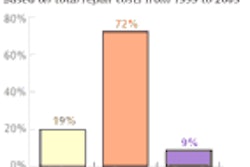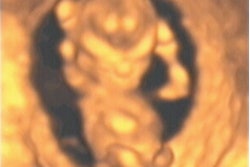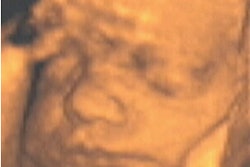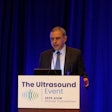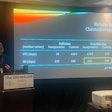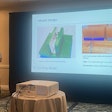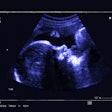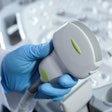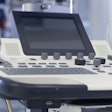Ultrasound may be a better choice for guiding percutaneous biopsies of the soft-tissue component of osteosarcoma than CT or fluoroscopy, according to results from a series of 35 biopsies performed at the M.D. Anderson Cancer Center in Houston.
Dr. Kamran Ahrar, an associate professor at M.D. Anderson, presented the results of his group's retrospective study at the 2004 Society of Interventional Radiology meeting in Phoenix.
The team reviewed 50 patients with diagnoses of osteosarcoma between July 1999 and November 2002. Thirty-three of those patients had initial biopsy of 35 lesions done at M.D. Anderson.
Twenty-five tumors were located in the femur, four in the tibia, two in the fibula, three in the humerus, and one in the radius. Ten patients had metastases at presentation.
In both US-guided and CT- or fluoroscopy-guided biopsies, fine-needle aspiration was performed and the results were evaluated by a cytologist to confirm viability of the sampling site. This was followed by 1-4 core biopsy samples that were obtained using 11-14-gauge biopsy needles. Upon completion of neoadjuvant therapy, all patients underwent surgical resection. All core biopsy samples and resected specimens were examined by a single experienced pathologist.
When diagnostic MRI revealed a substantial extraosseous component, which was the case in 23 patients, biopsy was performed using ultrasound alone, and all 23 were definitive, Ahrar said. Two of the 11 biopsies guided by either CT or fluoroscopy were inconclusive, which required open biopsy to confirm osteosarcoma, he said.
Ahrar said that the US-guided biopsies were "100% accurate" while "two of the 11 CT or fluoroscopic biopsies were inconclusive," so the accuracy rate was only 83%. The local recurrence rate was 8.6%.
The take-home message, according to Ahrar, is that when extraosseous components are clearly visible on sonography, "ultrasound offers unique advantages over other imaging modalities -- namely real-time visualization of the needle and the relationship to the lesion," he said, adding that CT and fluoroscopy be considered only when soft-tissue components are not easily visualized.
By Peggy PeckAuntMinnie.com contributing writer
May 7, 2004
Related Reading
PET/CT brings added value to pediatric oncology, February 27, 2004
Copyright © 2004 AuntMinnie.com





